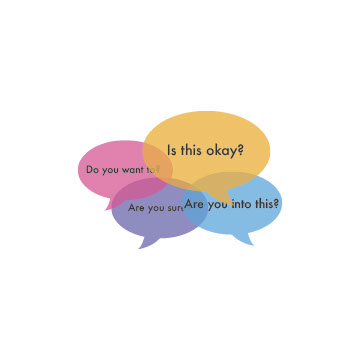
Pornography and the Commodification of Women’s Bodies
April 18, 2022
Popular media constantly portrays women as willingly engaging in oppressive sexual acts, conveniently repackaged as ‘liberating’. The concept of choice, however, is almost entirely rooted in either embracing or rejecting social conditioning and social norms, and consequently, it raises the question of whether oppression is being repackaged as empowerment, to curb dissent against commodification of women’s bodies.
TRIGGER WARNING: Discussion of nsfw, references to violence against women in porn, reference to paedophilia, reference to violence against sex workers.
When I turned twelve, my father begrudgingly gave me access to the Internet. We’d all just started growing up, and my friends were enraptured by the new-found freedom that the virtual world seemed to grant. They got their first phones, made social media accounts, and tried to prove their maturity by talking about porn – not knowing then, just how vulnerable to misinformation they were. I nagged my father for months, and he finally relented. I had a brand-new phone!
Man is a social animal, constantly wanting to fit in. Twelve-year-old me was no different. If watching and unabashedly discussing ‘adult films’ was cool, I wanted to be cool as well. It didn’t matter how disgusted I was by male genitals, or how disturbed I was by the violent manner in which women were treated in most videos. If watching porn helped me assimilate with my peers, so be it, I thought. But I’m 19 now, and all I can think of is that my 12-year-old self should have been kinder to herself.
According to research conducted by gender studies scholars, 9 out of 10 porn videos depict sexual violence and aggression. The women in these videos are portrayed as wanting to being aggressively treated, or are pleasured by sexual aggression by their male partners. Aggression against women in pornographic videos has been normalised to such an extent, that it de-sensitizes people to gender-based violence in real life. At times, women internalise the violence they see in these videos, and endure physical and sexual abuse from their partners under the guise of sexual pleasure. In fact, if they don’t feel ‘pleasured’ after being humiliated, beaten, and choked, they begin to feel that they are sexually inept and cannot please their partners. They are mocked for being a ‘prude’ if they don’t conform to men’s desires. On the other hand, adolescent males consume such content and have no qualms in exercising violence against women. Sexual abuse and coercion are reduced to mere foreplay for them.
Gender-based violence in porn is often dismissed as a ‘sexual fantasy that has no bearing in real life’. However, when a person regularly consumes content that shows men as dominant figures who aggressively treat their submissive female partners, and the very idea of ‘pleasure’ caters to heterosexual men’s fantasies, the lines between ‘fantasy’ and ‘sexual
violence’ are increasingly blurred. Further, the alarmingly progressive trend of child porn has emboldened pedophiles in real life.
Popular media, on the other hand, constantly portrays women as willingly engaging in oppressive sexual acts – conveniently repackaged as ‘liberating’. The concept of choice, however, is almost entirely rooted in either embracing or rejecting social conditioning and social norms, and consequently, it raises the question of whether oppression is being repackaged as empowerment, to curb dissent against commodification of women’s bodies.
Growing up, I had compelled myself to watch such videos to fit in at school. The constant portrayal of women as submissive beings, has affected me so gravely that even today, despite knowing that I’m bisexual and sexually attracted to men, I can’t bring myself to be comfortable with the idea of having sexual intercourse with a cis-het man. It also makes me insecure about my own sexuality sometimes: do I want to be with a woman because I am legitimately attracted to women, or simply because I’m afraid to be with a man?
Violence in porn not only encourages men and women alike to view sexual aggression as pleasurable and acceptable, it also normalises violence against sex workers – one of the most discriminated against and marginalised communities in the world. The concept of choice is distorted again when we take into account that most sex workers come from economically poor backgrounds, and thus have to resort to sex work to make ends meet. Buying someone’s consent through money is an ethically questionable practice of its own, and it also
makes the sex worker vulnerable to sexual violence. Rise of platforms like Onlyfans has further boosted the promotion of sexual violence as sexual empowerment, thus supressing the voices of sex workers who have attempted to shed light on this reality.
Fiction versus reality continues to be a debate across literature and popular media, and it is high time for us to start perceiving violence against women in porn through a feminist lens, and challenge men who are aroused and addicted to the abusive culture of mainstream porn. Questions should be raised as to what extent these are mere sexual fantasies, when after every rape case that hits national headlines, the name of the victim starts trending on porn sites. These introspections are the need of the hour, as we as a society continue to work for a gender-equal world.